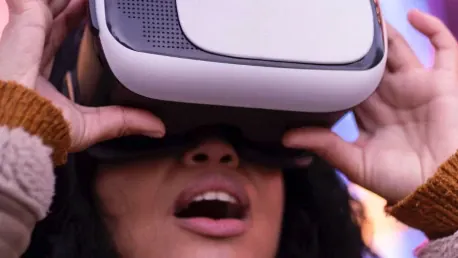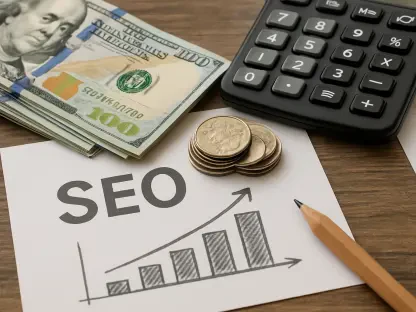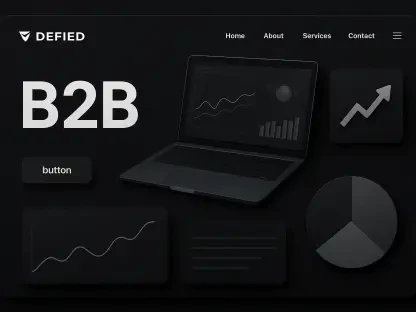The year 2025 is set to be transformative for digital marketing, driven by rapid advancements in technology, changing consumer behaviors, and newly emerging opportunities. As businesses anticipate these changes, they will need to adapt strategically to stay relevant and competitive. This article explores the key trends and strategies that will define the digital marketing landscape in 2025.
AI and Machine Learning: The Backbone of Digital Marketing
Artificial Intelligence (AI) and machine learning are poised to revolutionize digital marketing by automating tasks and providing deeper insights into consumer behavior. These technologies will enable more efficient audience segmentation, personalized content delivery, and behavior prediction. Tasks like automating emails and customizing ads for individual customers without manual input will become normal. The integration of AI in customer interactions, from chatbots to voice assistants, is expected to power 95% of these engagements by 2025.
AI’s role extends beyond automation—it’s set to enhance predictive analytics, helping businesses understand customer preferences and anticipate needs more precisely. Machine learning algorithms will continuously improve, enabling marketers to refine their campaigns and target the right audience with greater accuracy. As these technologies mature, businesses will not only automate routine tasks but also leverage AI-driven insights to develop more effective and personalized marketing strategies, ultimately improving customer satisfaction and retention.
Furthermore, the adoption of AI will democratize advanced marketing techniques, making sophisticated tools accessible to small and medium-sized enterprises (SMEs) that previously could not afford them. This democratization will lead to a more level playing field, where even smaller brands can compete with established giants by leveraging AI to deliver compelling customer experiences.
Voice Search Optimization: A New Dimension of SEO
The proliferation of voice-activated devices has brought voice search to the forefront of SEO practices. By 2025, over half of all searches are expected to be conducted via voice. This shift demands a reevaluation of traditional SEO strategies, pushing brands to focus on conversational phrases and natural language queries instead of traditional keyword optimization. As people increasingly use voice-activated assistants like Alexa, Siri, and Google Assistant, businesses must develop content that aligns with the nuances of spoken language, which often differs significantly from written text.
Businesses will need to adapt their content to align with voice search trends, optimizing for questions and phrases that users are likely to speak rather than type. This transformation will require a deeper understanding of conversational search patterns and the intent behind user queries, leading to more effective SEO strategies. Understanding context and semantics will be crucial, as voice searches tend to be longer and more specific. Marketers will need to leverage advanced natural language processing (NLP) tools to create content that truly resonates with voice search users.
Additionally, the focus on voice search optimization will extend to the design of websites and user experiences. Sites will need to become more intuitive and voice-friendly, offering streamlined navigation and quick answers to the questions users are likely to ask via voice. Companies that can anticipate these changes and re-engineer their digital properties to be compatible with voice search will gain a significant competitive edge in the new search landscape.
Prioritizing Privacy and Ethical Data Collection
With growing concerns over privacy, the digital marketing industry is moving away from third-party cookies. Giants like Google are leading the charge, emphasizing the need for first-party data. In this new landscape, businesses must incentivize customers to share their information by offering tangible value in return. Ethical data collection practices will be crucial for building and maintaining customer trust.
First-party data will become invaluable, offering insights directly from customers. Marketers will need to develop transparent and value-driven strategies to collect and utilize this data effectively. By prioritizing privacy, businesses can ensure long-term relationships built on trust and mutual benefit. More importantly, brands that respect consumer privacy and transparently communicate their data practices will not only comply with regulatory requirements but also differentiate themselves in a market where privacy is increasingly paramount.
Moreover, the pivot towards first-party data will necessitate a focus on creating compelling offers that encourage voluntary data sharing. Personalized experiences, exclusive content, and loyalty programs are just a few ways businesses can add value for their customers and encourage data sharing. This approach will not only provide richer data for marketers but also enhance the customer experience, fostering stronger, more loyal relationships.
Social Media Commerce: The New Marketplace
Social media platforms are evolving into comprehensive marketplaces where users can shop directly. This trend, known as social commerce, is projected to reach $1.2 trillion by 2025. Brands will need to integrate shoppable content into their strategies to leverage this growing market. Creating engaging, interactive content that drives conversions directly through social platforms will be essential. Beyond mere aesthetics, brands must develop compelling narratives and user experiences that transform casual viewers into loyal customers.
Social media will not only be a platform for promotion but also a direct sales channel. With features such as shoppable posts, in-app checkouts, and social storefronts becoming more prevalent, brands can offer a seamless and immersive shopping experience. Engaging content—ranging from influencer endorsements and user-generated content to interactive live streams and augmented reality try-ons—will be crucial in capturing consumer attention and driving sales.
Furthermore, the integration of social commerce will blur the lines between social interaction and online shopping, fostering a more community-oriented retail experience. Brands that can build vibrant online communities where users feel connected and engaged will reap significant benefits. These communities not only drive sales but also provide invaluable feedback and insights, enabling marketers to refine their offerings and better meet customer needs.
Authentic Influencer Marketing: Trust Over Trend
The landscape of influencer marketing is shifting towards authenticity and genuine endorsements. By 2025, consumers will increasingly favor authentic, relatable content over polished, sponsored posts. This shift highlights the importance of fostering trust and credibility in influencer partnerships. Micro-influencers, with their smaller yet highly engaged followings, will become more prominent. These influencers offer more genuine interactions and can connect with niche audiences more effectively. Brands will need to carefully select influencers who align with their values and can authentically advocate for their products.
As consumers become savvier and more skeptical of blatant advertising, the emphasis on authenticity will grow. This trend underscores the need for influencers to maintain their integrity and for brands to foster collaborations based on mutual respect and shared values. In this environment, influencer marketing strategies will need to be more nuanced, focusing on long-term relationships rather than one-off campaigns.
Additionally, brands will benefit from leveraging data to identify the most effective influencers for their target demographics. By analyzing engagement metrics, audience insights, and past campaign performance, marketers can make more informed decisions and optimize their influencer strategies. Ultimately, authentic influencer marketing will hinge on genuine storytelling and the ability to create meaningful connections between brands and consumers.
The Dominance of Video Marketing
Video content is set to dominate internet traffic, contributing to an estimated 80% of traffic by 2025. Both pre-recorded videos and live streaming will play vital roles in engaging audiences. Brands must adopt a video-centric approach, focusing on authentic, behind-the-scenes content that resonates with viewers. The growing preference for video content underscores the need for businesses to create dynamic and relatable visuals. From storytelling to product demonstrations, video marketing offers a versatile medium to communicate with audiences more effectively and memorably.
In the era of short attention spans, video content has emerged as one of the most effective ways to capture and retain audience interest. Marketers will need to explore various video formats—from short-form clips on platforms like TikTok and Instagram Reels to long-form content on YouTube and Facebook—to engage diverse audiences. The live streaming boom, accelerated by the COVID-19 pandemic, is also expected to continue, offering brands an opportunity to connect with audiences in real time and build a sense of community.
Investing in high-quality video production and utilizing data-driven insights to craft compelling narratives will be critical in this video-dominated landscape. Brands that can master the art of visual storytelling will not only enhance their marketing efforts but also forge deeper emotional connections with their audiences, driving both engagement and loyalty.
Advanced PPC Advertising: Precision and Efficiency
Pay-per-click (PPC) advertising is becoming increasingly sophisticated with the assistance of AI and machine learning. These technologies enhance ad targeting and efficiency, allowing businesses to spend their ad budgets more wisely. By 2025, annual spending on PPC is projected to exceed $200 billion. AI-driven PPC campaigns will deliver precise ads at optimal times, maximizing return on investment (ROI). Marketers will benefit from improved targeting and data-driven optimization, leading to more effective advertising strategies and better overall performance.
As competition for consumer attention intensifies, the ability to deliver highly relevant ads to the right audience at the right time will become a key differentiator. AI-powered tools can analyze vast amounts of data to identify patterns and trends, enabling marketers to fine-tune their ad campaigns with surgical precision. This will result in higher conversion rates and a more efficient allocation of marketing resources.
Moreover, the use of dynamic creative optimization (DCO) will allow brands to automatically personalize ads based on user behavior and preferences. This level of customization will enhance the effectiveness of ad campaigns, ensuring that each user receives a tailored message that resonates with their unique needs and interests. As a result, businesses will achieve better engagement, higher click-through rates, and ultimately, greater ROI from their PPC efforts.
Augmented Reality (AR): Bridging the Digital-Physical Divide
Augmented Reality (AR) is set to transform the online shopping experience by allowing customers to interact with products virtually before making a purchase. Retailers like IKEA and Sephora are already leveraging AR, and its usage is expected to expand significantly, with the AR market projected to reach $300 billion by 2025. AR technology bridges the gap between digital and physical shopping experiences, providing a more immersive and interactive way for customers to engage with products online.
The adoption of AR will enhance customer confidence and satisfaction in online shopping. By allowing customers to visualize how products will look and feel in their own environments—whether it’s trying on clothes virtually or placing furniture in their homes—AR reduces uncertainty and enhances the decision-making process. This technology will be particularly valuable for high-consideration purchases, where visualizing the product in context is crucial for making an informed decision.
In addition to improving the shopping experience, AR offers new avenues for creative marketing. Brands can develop interactive AR campaigns that engage users in novel ways, from virtual try-ons and product visualizations to gamified experiences that drive social sharing and viral buzz. As AR technology continues to advance, it will become an integral part of the digital marketing toolkit, offering endless possibilities for enhancing customer engagement and driving sales.
Conclusion
The year 2025 is poised to be a game-changer for digital marketing, influenced by brisk technological progress, evolving consumer behaviors, and the rise of new opportunities. As these dynamics unfold, businesses will need to adjust strategically to remain relevant and competitive in a rapidly shifting marketplace. This article delves into the pivotal trends and strategies expected to shape the digital marketing landscape in 2025.
Emerging technologies like artificial intelligence and machine learning are set to revolutionize how marketers approach consumer engagement and data analysis. These tools will allow for unprecedented levels of personalization and efficiency in targeting and retaining customers. Similarly, advancements in virtual and augmented reality could transform how brands deliver immersive, engaging experiences.
Consumer behavior is also shifting, with increasing demands for transparency, authenticity, and community-driven content. Brands that can effectively tap into these expectations will likely see greater loyalty and higher engagement rates. Additionally, the growing importance of mobile-first strategies and the rise of e-commerce will make it essential for businesses to optimize their digital presence tailored to on-the-go consumers.
Staying competitive will require businesses to continually innovate and adopt agile marketing strategies. Keeping an eye on these trends and being prepared to pivot as necessary will ensure brands can thrive amid the dynamic digital landscape of 2025.









